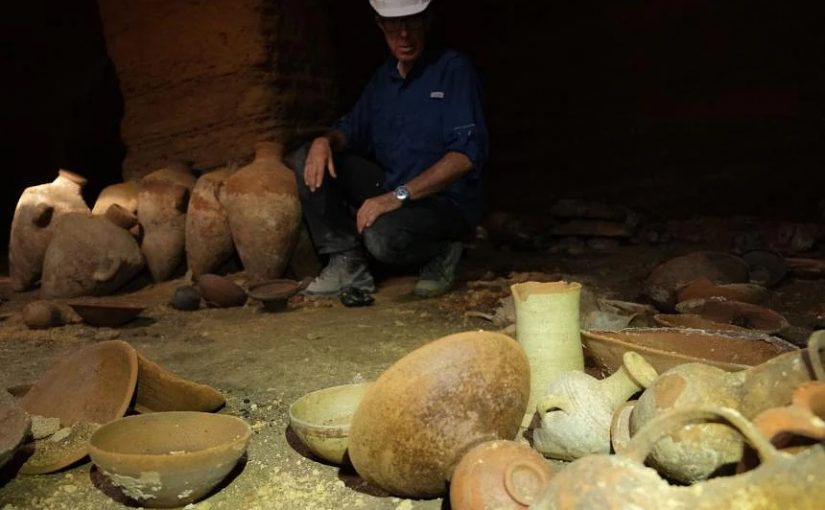Leonardo da Vinci's DNA found in 6 living relatives after 500 years
Extremely rare Rameses II-era burial cave found in Israel

A preliminary inspection of the 3,300-year-old cave at Palmachim National Park, on Sept 13, 2022. [Photo: Israel Antiquities Authority on Twitter]
Israeli archaeologists on Sunday announced the “once-in-a-lifetime” discovery of a burial cave from the time of ancient Egyptian Pharaoh Rameses II, filled with dozens of pottery pieces and bronze artefacts.
The cave was uncovered on a beach Tuesday, when a mechanical digger working at the Palmahim national park hit its roof, with archaeologists using a ladder to descend into the spacious, man-made square cave.
הצצה נדירה ל”סט התפאורה” של אינדיאנה ג’ונס: מערת קבורה מימי פרעה רעמסס השני, ובה עשרות חפצים שלמים, נחשפה במפתיע בגן הלאומי פלמחים.
בעת עבודות של רשות הטבע והגנים לפיתוח הגן הלאומי פגע טרקטור בסלע, וחשף במפתיע את תקרתה של מערת קבורה קדומה.צילום: אמיל אלג’ם, רשות העתיקות pic.twitter.com/WupQeYWQEh
— רשות העתיקות – Israel Antiquities Authority (@AntiquitiesIL) September 18, 2022
In a video released by the Israel Antiquities Authority, gobsmacked archaeologists shine flashlights on dozens of pottery vessels in a variety of forms and sizes, dating back to the reign of the ancient Egyptian king who died in 1213 BC.
Bowls – some of them painted red, some containing bones – footed chalices, cooking pots, storage jars, lamps and bronze arrowheads or spearheads could be seen in the cave.
The objects were burial offerings to accompany the deceased on their last journey to the afterlife, found untouched since being placed there about 3,300 years ago.
At least one relatively intact skeleton was also found in two rectangular plots in the corner of the cave.
“The cave may furnish a complete picture of the Late Bronze Age funerary customs,” said Eli Yannai, an IAA Bronze Age expert.
It is an “extremely rare… once-in-a-lifetime discovery,” Yannai said, pointing to the extra fortune of the cave having remained sealed until its recent uncovering.
The findings date to the reign of Rameses II, who controlled Canaan, a territory that roughly encompassed modern day Israel and the Palestinian territories.
The provenance of the pottery vessels – Cyprus, Lebanon, northern Syria, Gaza and Jaffa – is testimony to the “lively trading activity that took place along the coast,” Yannai said in an IAA statement.
The cave has been resealed and is under guard while a plan for its excavation is being formulated, the IAA said, noting “a few items” had been looted from it in the short period of time between its discovery and closure.













Leave a Reply
Be the First to Comment!
You must be logged in to post a comment.
You must be logged in to post a comment.